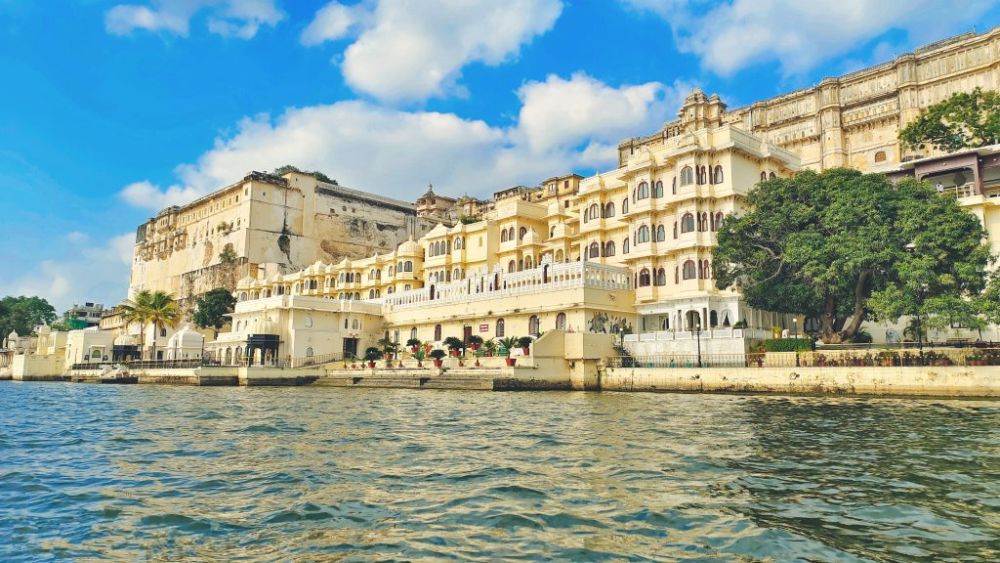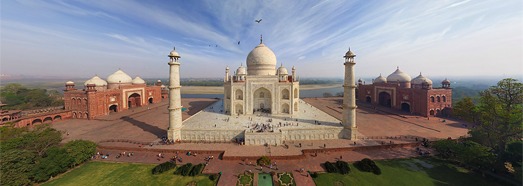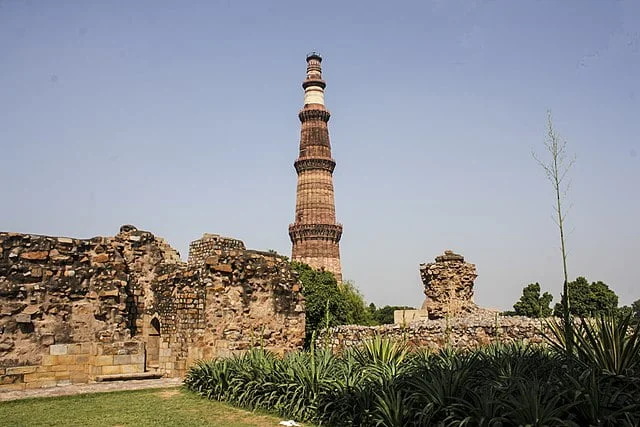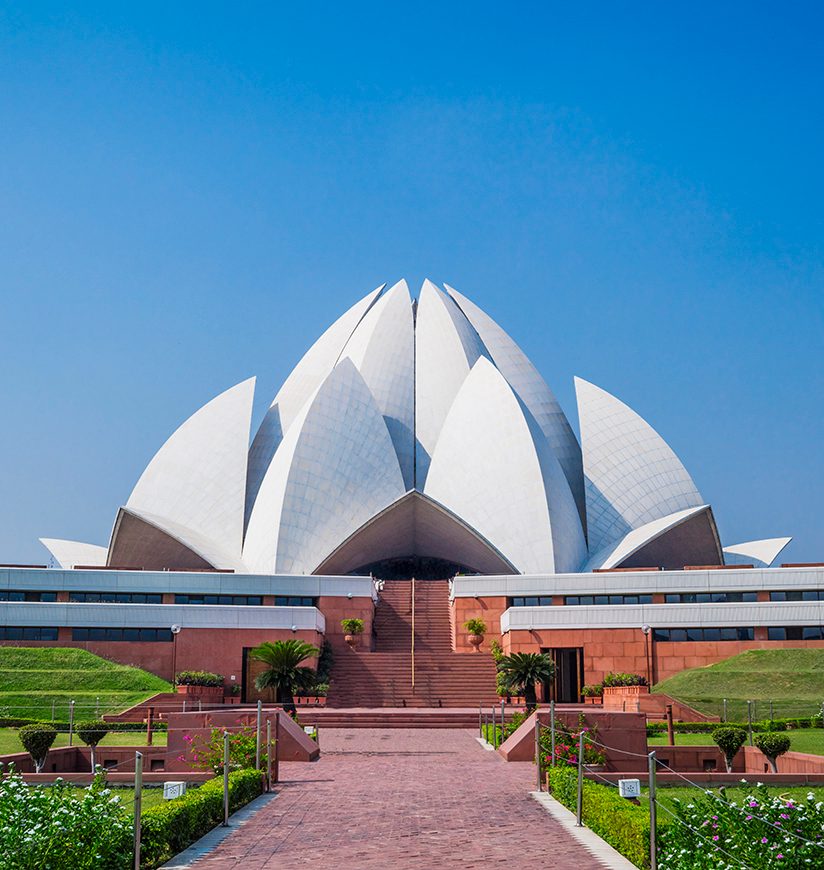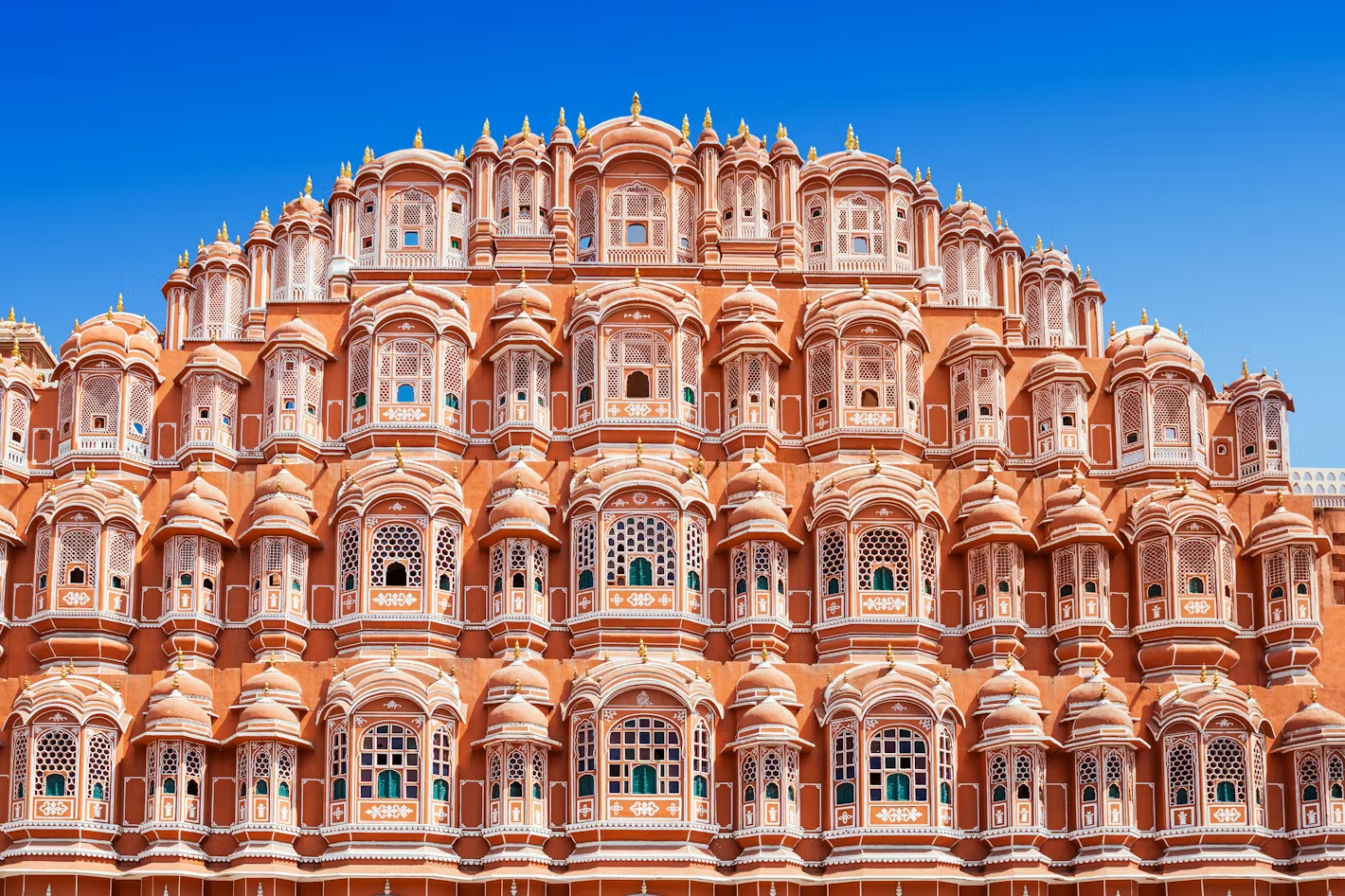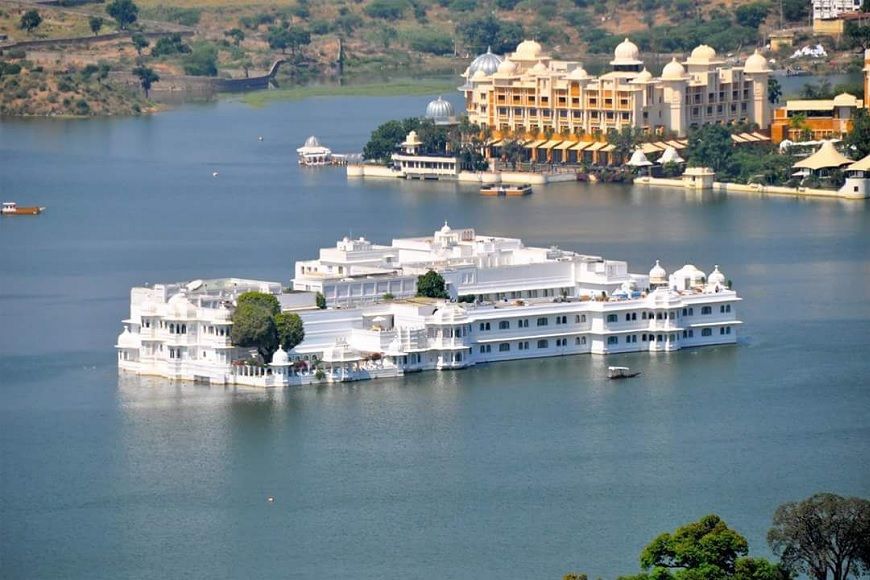Overview
ô Golden Triangle with Udaipur Tour ã
8 Nights / 9 Days
Embark on a
fascinating journey through Indiaãs most iconic destinations ã Delhi, Jaipur,
Agra, and Udaipur.
This tour blends history, culture, royal architecture, and romantic landscapes
in one seamless itinerary.
Explore the vibrant capital city of Delhi with its Mughal monuments and
colonial past.
In Jaipur, the Pink City, witness majestic forts, royal palaces, and bustling
bazaars.
Experience the eternal beauty of the Taj Mahal at sunrise in Agra, a UNESCO
World Heritage marvel.
Take a scenic flight to Udaipur, the city of lakes, known for its palaces,
ghats, and romantic ambiance.
Enjoy a peaceful boat ride on Lake Pichola with views of City Palace and Jag
Mandir.
This journey is ideal for first-time travelers to India seeking culture,
history, and royal elegance.
Perfectly curated with comfortable stays, private transport, expert guides, and
hassle-free logistics.
A perfect introduction to Indiaãs regal heritage, architectural brilliance, and
timeless charm.
ãÿ¡ Golden
Triangle with Udaipur Tour ã 8 Nights / 9 Days
Route: Delhi (2N)
ã Jaipur (2N) ã Agra (2N) ã ãÿ¡ Udaipur (2N)
Travel Style: Heritage, Culture & Architecture
Departure: Any date on request
Udaipur transfer: Flight from Delhiô (Day 7)
Tour Highlights
- ãÿ¡ Explore Indiaãs Golden Triangle ã Delhi, Jaipur & Agra
ã a perfect cultural circuit.
- ãÿ¡ Visit the world-famous Taj Mahal, a symbol of eternal love
and a UNESCO World Heritage Site.
- ãÿ¡ Discover the majestic Amber Fort in Jaipur with an
elephant/jeep ride.
- ãÿ¡ Stroll through bustling bazaars, traditional havelis, and
Mughal-era architecture in Delhi.
- ãÿ¡ Marvel at the fusion of Rajput and Mughal architecture at Agra
Fort and Fatehpur Sikri.
- ãÿ¡ Enjoy a scenic flight from Agra to Udaipur ã saving time
and offering comfort.
- ãÿ¡ Experience the romantic charm of Udaipur, the City of
Lakes, surrounded by the Aravalli Hills.
- ãÿ¡ Cruise on Lake Pichola with views of the City Palace and
Jag Mandir.
- ãÿ¡ Visit colorful temples, royal palaces, and traditional gardens in
Udaipur.
- ãÿ¡ Stay in handpicked hotels with daily breakfast and guided tours by
local experts.
Itinerary
DAY 01: ARRIVAL IN DELHI
- Arrival at Delhi Airport. Meet & Greet by our representative.
- Transfer to hotel. Check-in & relax.
- Evening at leisure or visit India Gate and Connaught Place.
- Overnight in Delhi
DAY 02: DELHI CITY TOUR
- Breakfast at the hotel.
- Full-day sightseeing of Delhi:
- Jama Masjid, Chandni Chowk (Rickshaw Ride), Raj Ghat
- Drive past Red Fort & Parliament House
- Visit Qutub Minar, Humayunãs Tomb, Lotus Temple
- Return to hotel.
- Overnight in Delhi
DAY 03: DELHI ã JAIPUR (Approx. 5 hrs)
- Drive to Jaipur after breakfast.
- En route: Visit stepwell at Abhaneri (optional).
- Arrival & check-in at hotel.
- Evening free or optional dinner at Chokhi Dhani (traditional
Rajasthani village theme).
- Overnight in Jaipur
DAY 04: JAIPUR SIGHTSEEING
- Visit Amber Fort (elephant/jeep ride)
- Photo stop at Jal Mahal
- City Palace, Jantar Mantar, Hawa Mahal
- Explore local bazaars for handicrafts & gems
- Overnight in Jaipur
DAY 05: JAIPUR ã AGRA (Approx. 4.5 hrs)
- Breakfast at hotel.
- Drive to Agra. En route visit Fatehpur Sikri (UNESCO Site).
- On arrival, check-in and relax.
- Visit Mehtab Bagh for sunset view of the Taj Mahal across the
Yamuna.
- Overnight in Agra
DAY 06: AGRA - DELHI
ôñ ô Sunrise visit
to Taj Mahal (closed on
Fridays).
DAY 07: DELHIô ãÿ¡ UDAIPUR (BY FLIGHT)
- Transfer to airport for flight to Udaipur (morning/afternoon as per
availability)
- Arrive in Udaipur and transfer to hotel
- Evening: Enjoy sunset boat ride on Lake Pichola
- Overnight in Udaipur
DAY 08: UDAIPUR SIGHTSEEING
- Visit City Palace Complex, Crystal Gallery
- Jagdish Temple, Saheliyon ki Bari
- Explore old town and art shops
- Optional: Dharohar Folk Dance Show at Bagore ki Haveli
- Overnight in Udaipur
ô DAY 09: UDAIPUR ãÿ¡ DELHI ã
ONWARD JOURNEY
- Breakfast and check-out.
- Transfer to Udaipur Airport for flight back to Delhi.
- On arrival in Delhi, connect to your international flight or onward
destination.
- Tour Ends with Beautiful Memories!
Inclusions & Exclusions
ã
Inclusions
- 8 Nights accommodation in selected category hotel with breakfast
- Private AC vehicle with driver for all transfers & sightseeing
- English-speaking local guides in Delhi, Jaipur, Agra & Udaipur
- Airport transfers (Delhi arrival & Udaipur departure)
- Monument entrance tickets (as per the program)
- Flight ticket: Agra to Udaipur (Economy Class)
- Rickshaw ride in Old Delhi & boat ride in Udaipur
- Toll, parking, driver allowance, taxes
ã Exclusions
- International airfare & visa
- Lunch & dinner (unless specified)
- Camera/video fees at monuments
- Personal expenses, tips
- Travel insurance
- Anything not mentioned under "Inclusions"
Tour Policy
ô ô E-Visa Information HISPANO INDIA TRAVELS
ôñô ô ô ô ô ô ô ô
Entering India by air or land is
relatively straightforward, with standard immigration and customs procedures. A
previously frustrating law barring re-entry into India within two months of the
previous date of departure has been done away with (except for citizens of some
Asian countries), thus allowing most travellerãs to combine their India tour
with side trips to neighbouring countries.
ôñô ô ô ô ô ô ô ô
ô PASSPORTS
ôñô ô ô ô ô ô ô ô
To enter India you need a valid
passport and an onward/return ticket, and a visa. Note that your passport needs
to be valid for at least 180 days after your entry into India, and should have
at least two blank pages. If your passport is lost or stolen, immediately
contact your countryãs representative. Keep digital photos or photocopies of
your airline ticket and the identity and visa pages of your passport in case of
emergency.
ôñô ô ô ô ô ô ô ô
VISA
ôñô ô ô ô ô ô ô ô
Required for most visitors;
e-Visa (valid 60 days) available for more than 150 nationalities. Longer trips
require a standard six-month tourist visa.
ôñô ô ô ô ô ô ô ô
ô FURTHER INFORMATION
ôñô ô ô ô ô ô ô ô
Apart from citizens of Nepal,
Bhutan and the Maldives, who don't need visas for India unless they are
arriving from mainland China, and citizens of Japan and South Korea, who can
obtain a visa on arrival, everyone needs to apply for a visa before arriving in
India. However, more than 150 nationalities can obtain the wonderfully
hassle-free 60-dayô e-Visa.
ôñô ô ô ô ô ô ô ô
There's also a six-month tourist
visa, which is valid from the date of issue, not the date of arrival in India.
ôñô ô ô ô ô ô ô ô
ô E-VISA
ôñô ô ô ô ô ô ô ô
Citizens from more than 150
countries can apply for an e-Visa (www.indianvisaonline.gov.in/evisa).
ôñô ô ô ô ô ô ô ô
You must apply a minimum of four
days and a maximum of 120 days before you are due to arrive in India.
ôñô ô ô ô ô ô ô ô
The visa will be valid from your
date of arrival in India.
ôñô ô ô ô ô ô ô ô
It's a double-entry visa that
lasts for 60 days from your first date of entry.
ôñô ô ô ô ô ô ô ô
To apply, upload a photograph as
well as a copy of your passport; have at least 180 days' validity in your
passport and at least two blank pages.
ôñô ô ô ô ô ô ô ô
If your application is approved,
you will receive an attachment to an email within 72 hours (though normally
much sooner), which you'll need to print out and take with you to the airport.
You'll then have the e-Visa stamped into your passport on arrival in India.
ôñô ô ô ô ô ô ô ô
Note that the e-Visa is also
sometimes referred to as a 'visa on arrival', though you need to apply for it
before you arrive.
ôñô ô ô ô ô ô ô ô
E-Visas are only valid for entry
through 26 designated airports: Ahmedabad, Amritsar, Bag Dogra, Bengaluru
(Bangalore), Chennai, Chandigarh, Coimbatore, Delhi, Gaya, Goa, Guwahati,
Hyderabad, Jaipur, Kochi (Cochin), Kolkata, Kozhikode (Calicut), Lucknow,
Madurai, Mangalore (Mangalore), Mumbai, Nagpur, Pune, Trichy (Tiruchirappalli),
Thiruvananthapuram (Trivandrum), Varanasi and Visakhapatnam.
ôñô ô ô ô ô ô ô ô
They are also valid for arrival
at five designated seaports: Kochi, Goa, Mangalore, Mumbai and Chennai.
ôñô ô ô ô ô ô ô ô
E-Visa holders can, however,
leave India from any authorized immigration checkpoint.
ôñô ô ô ô ô ô ô ô
ENTRY REQUIREMENTS
ôñô ô ô ô ô ô ô ô
Visas are available at Indian
missions worldwide, though in many countries applications are processed by a
separate private company.
ôñô ô ô ô ô ô ô ô
Student and business visas have
strict conditions (consult your Indian embassy for details).
ôñô ô ô ô ô ô ô ô
A standard 180-day tourist visa
permits multiple entry for most nationalities.
ôñô ô ô ô ô ô ô ô
The 60-day e-Visa is usually a
double-entry visa.
ôñô ô ô ô ô ô ô ô
Five- and 10-year tourist visas
are available to US citizensô only underô a bilateral
arrangement; however, you can still only stay in the country for up to 180 days
continuously.
ôñô ô ô ô ô ô ô ô
Currently you are required to
submit two digital photographs with your visa application (format jpeg
10kbã300kb), though only one for the e-Visa.
ôñô ô ô ô ô ô ô ô
An onward-travel ticket is a
requirement for some visas, but this isnãt always enforced (check in advance).
ôñô ô ô ô ô ô ô ô
Visas are priced in the local
currency and may have an added service fee.
ôñô ô ô ô ô ô ô ô
Extended visas are possible for
those of Indian origin (excluding those in Pakistan and Bangladesh) who hold a
non-Indian passport and live abroad.
ôñô ô ô ô ô ô ô ô
If you need to register your
visa (for stays of more than 180 days), or need a visa extension (only granted
in exceptional cases) or a replacement for a lost passport (required before you
can leave the country), then you should apply online atô https://indianfrro.gov.in/eservices/home.jsp.
ôñô ô ô ô ô ô ô ô
If you need to see someone in
person about your visa issue, then you should do so at theô Foreignersã Regional
Registration Officeô in Delhi.
ôñô ô ô ô ô ô ô ô
Check with the Indian embassy in
your home country for any special conditions that may exist for your
nationality.
ôñô ô ô ô ô ô ô ô
ô RE-ENTRY REQUIREMENTS
ôñô ô ô ô ô ô ô ô
The previous rule of no re-entry
on the same visa for two months after leaving India no longer applies to
foreign nationals (except nationals of Afghanistan, China, Iran, Pakistan,
Iraq, Sudan and Bangladesh, foreigners of Pakistani and Bangladeshi origin, and
stateless persons). E-Visas can now be used for double entry into India.
ôñô ô ô ô ô ô ô ô
ô VISA EXTENSION
ôñô ô ô ô ô ô ô ô
India is extremely stringent
with visa extensions. At the time of writing, the government was granting
extensions only in circumstances such as medical emergencies or theft of
passport just before the applicant planned to leave the country (at the end of
their visa).
ôñô ô ô ô ô ô ô ô
If you do need to extend your
visa due to any such exigency, you should first apply online at e-FRRO (https://indianfrro.gov.in/eservices/home.jsp),
which also deals with replacements for lost/stolen passports (required before
you can leave the country). If you need to see someone in person, or are called
in for an interview, the place to go is theô Foreignersã Regional Registration Officeô in
Delhi. There are also some regional FRROs, but these are even less likely to
grant an extension.
ôñô ô ô ô ô ô ô ô
Assuming you meet the stringent
criteria, the FRRO is permitted to issue an extension of 14 days (free for
nationals of most countries; enquire on application). You must bring one
passport photo (take more, just in case), your passport (or emergency travel
document, if your passport is missing), and a letter from the hospital where
you're having treatment if it's a medical emergency. Note that this system is
designed to get you out of the country promptly with the correct official
stamps, not to give you two extra weeks of travel and leisure.
ôñô ô ô ô ô ô ô ô
ô TRAVEL PERMITS
ôñô ô ô ô ô ô ô ô
Access to certain parts of India
ã particularly disputed border areas ã is controlled by a system of permits
that applies mostly to foreigners but also to Indian citizens in some areas.
ôñô ô ô ô ô ô ô ô
Permits are required to visit
Arunachal Pradesh, Sikkim and certain parts of Himachal Pradesh, Ladakh and
Uttarakhand that lie close to the disputed border with China/Tibet. A permit is
also necessary for travel to the Lakshadweep Islands and to some parts of the
Andaman Islands.
ôñô ô ô ô ô ô ô ô
In Odisha, permission is no
longer required to visit tribal regions, and thereãs nothing to stop tourists
from taking a bus or taxi to visit regional markets, but some villages are off
limits to visitors (due to potential Maoist activity), so seek local advice
before setting out.
ôñô ô ô ô ô ô ô ô
Obtaining a permit is usually a formality, but
travel agents must apply on your behalf for certain areas, including many
trekking routes passing close to national borders.ô
